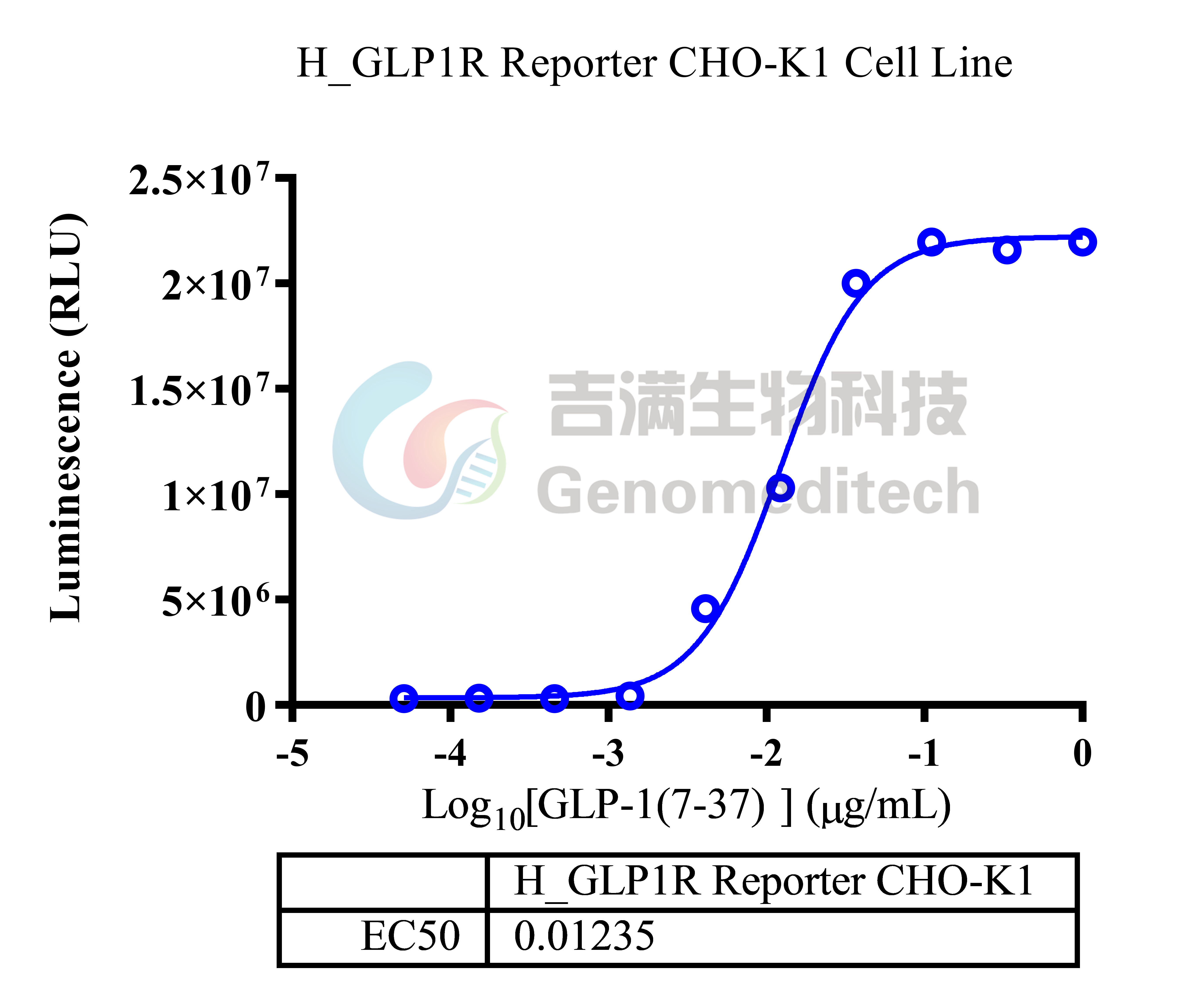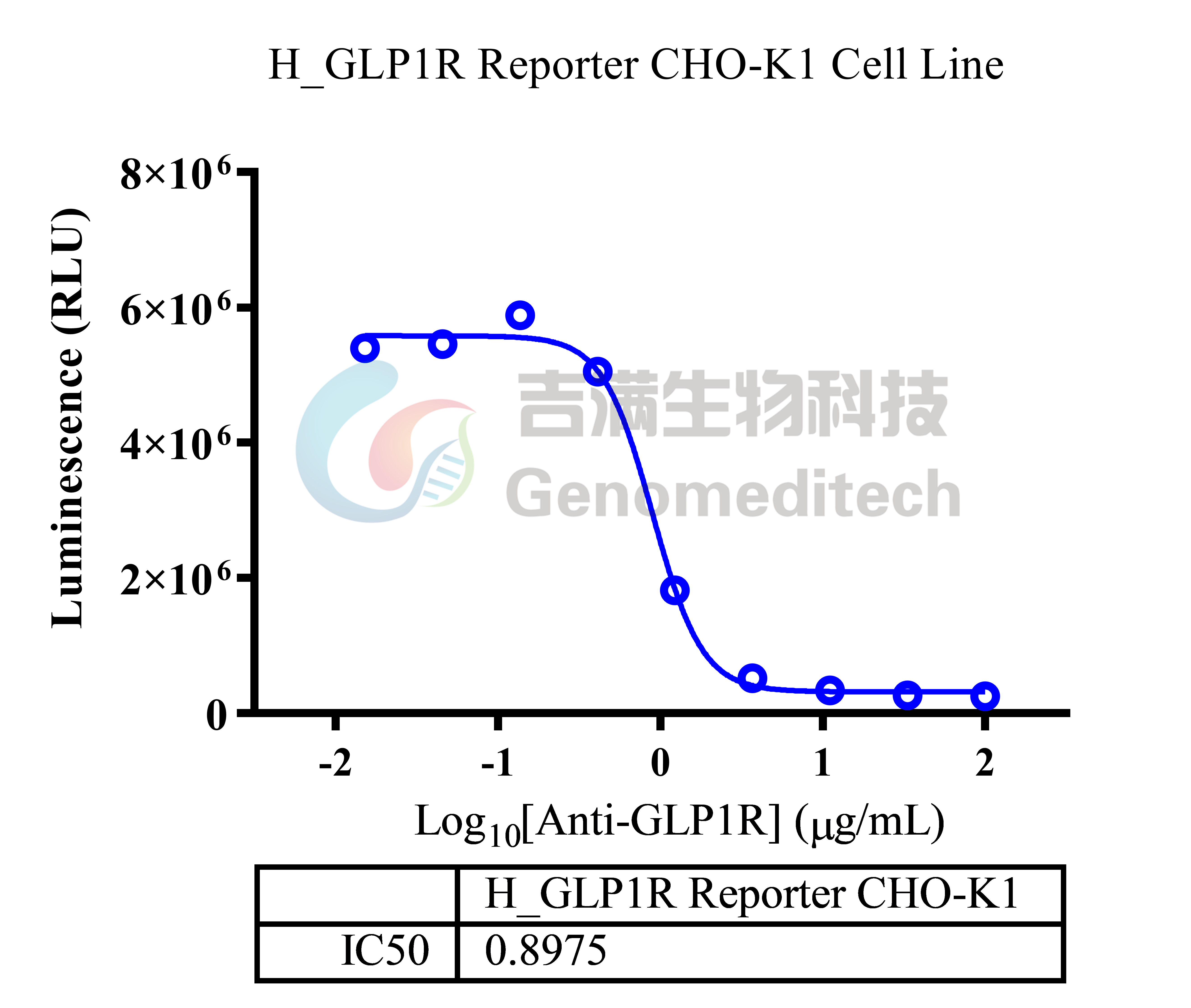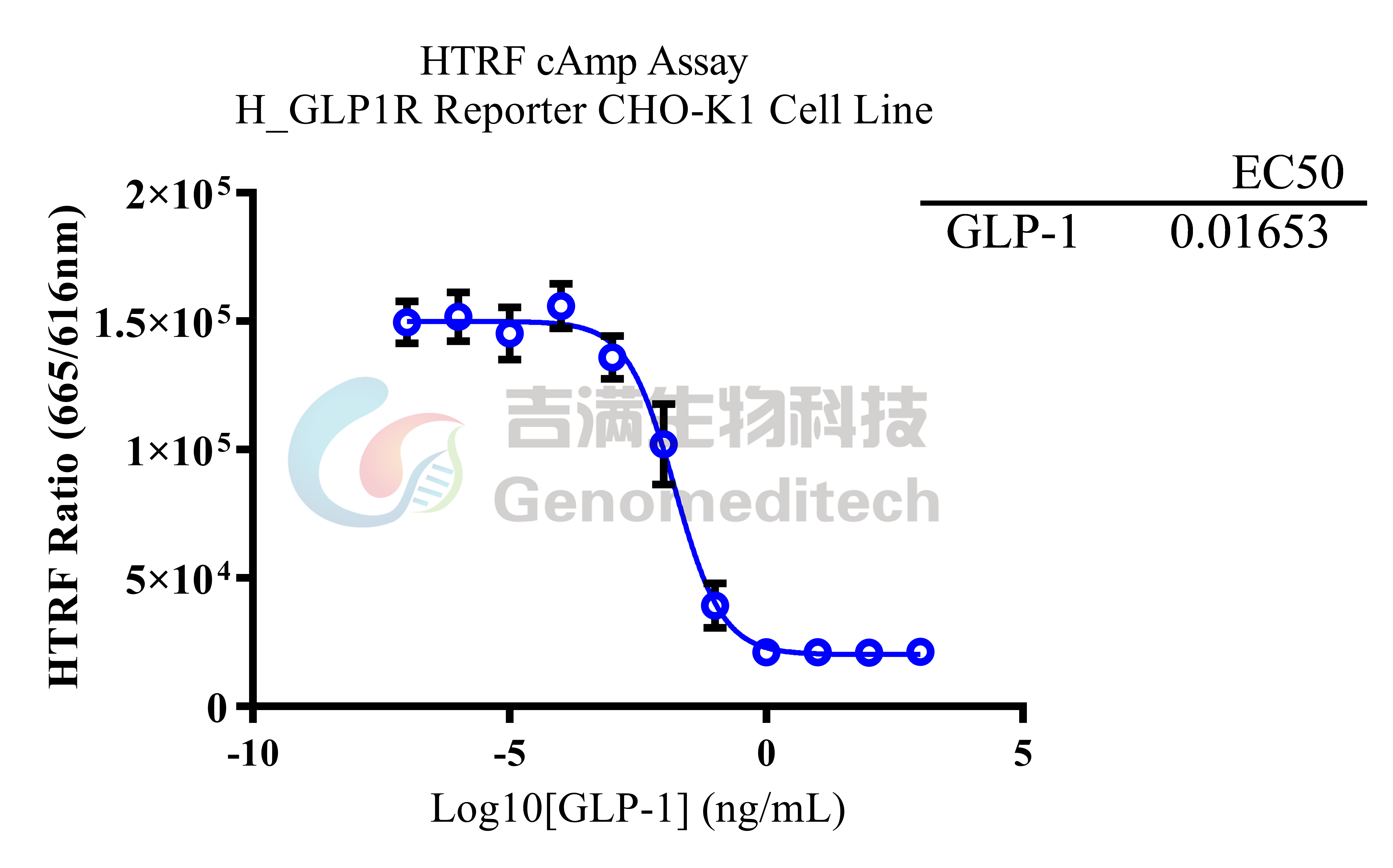| Cat. No: GM-C09150 Product: H_GLP1R Reporter CHO-K1 Cell Line Glucagon-like peptide-1 receptor (GLP-1R) is a receptor protein found on pancreatic cells and brain neurons, made from the GLP1R gene on chromosome 6. As part of the glucagon receptor family of G protein-coupled receptors, GLP-1R, when activated, stimulates the adenylate cyclase pathway, boosting insulin synthesis and release. This makes it a target for diabetes medications called GLP-1R agonists, and it also helps regulate appetite in the brain. GLP-1R recognizes specific ligands at its N-terminal and couples with various G proteins (Gαs, Gαi, Gαo, and Gαq/11) to influence cell pathways. Binding to GLP-1 (7-37) activates Gαs by dissociating its alpha subunit, which activates adenylate cyclase (cAMP). This increases intracellular cAMP and protein kinase A (PKA) activity, enhancing insulin gene transcription through signaling pathways. H_GLP1R Reporter CHO-K1 Cell Line is a clonal stable CHO-K1 cell line constructed using lentiviral technology, constitutive expression of human GLP1R, along with signal-dependent expression of a luciferase reporter gene . The binding of the agonistic GLP-1 protein to GLP1R activates downstream reporter genes, leading to luciferase expression. Blockade antibodies of GLP1R can inhibit GLP1-GLP1R signal transmission. The luciferase readout represents the activation level of the signaling pathway and can thus be used for evaluating the in vitro effects of related drugs of GLP1R. |  |



















